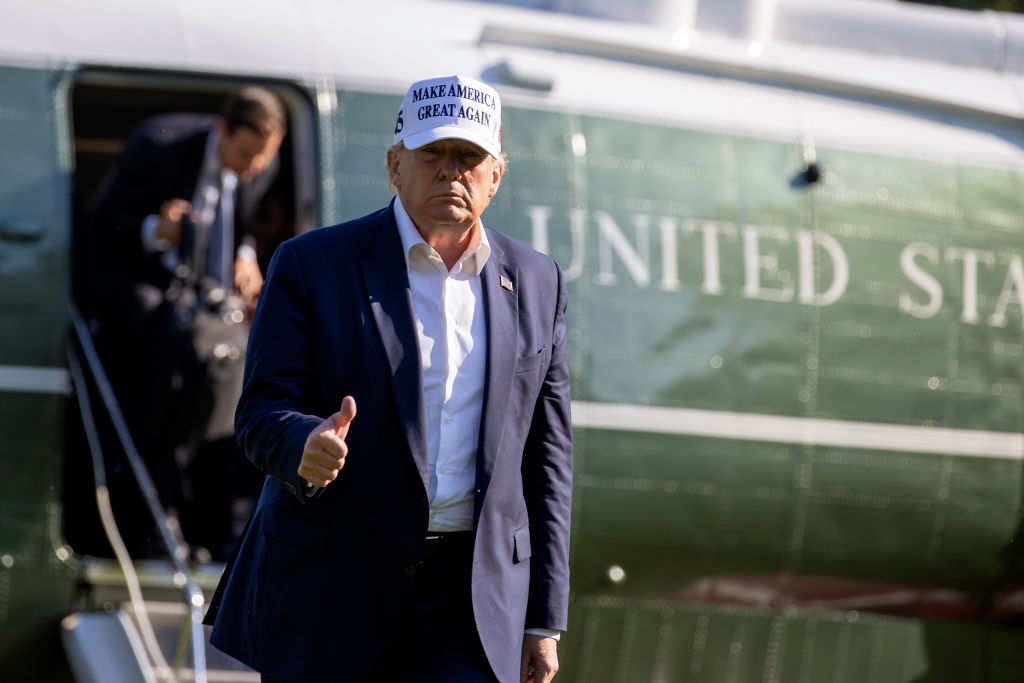Public opinion polls haven’t been particularly positive for President Trump or his Republican allies on Capitol Hill. This past weekend was no better. CNN’s most recent poll has presumptive Democratic presidential nominee Joe Biden leading Trump in Florida by 5 percent, Arizona by 4 percent, and Michigan by 12 percent. The Associated Press piled on the bad news with an even more dismal showing for the President: only 32 percent of Americans support Trump’s handling of the coronavirus pandemic. And eight in 10 Americans believe the country is headed in the wrong direction.
America’s presidential election contests are decided in a few swing states like Florida, Wisconsin, Pennsylvania, and North Carolina. But it’s in the suburbs of those states where elections are won or lost. And quite frankly, the numbers today don’t look encouraging for Trump’s re-election team or for those incumbent GOP senators who are on the ballot this year.
In 2016, Trump won the suburbs over Hillary Clinton by four points. The victory cemented his come-from-behind shocker against the US political establishment. But this year, he’s at risk of seeing those very same suburban voters switch to Biden. Fox News, not exactly a liberal bastion, put Trump 11 percentage points behind Biden in the suburbs in its latest survey. If the President and his campaign can’t find a way to make up the difference with college-educated Americans in these areas, no amount of base voters will be able to save him from defeat in November. The numbers simply aren’t there.
Like all political campaigns in the history of mankind, the Trump re-election campaign talks a big game about their prospects. They remind reporters that polls can be inaccurate and unreliable (just look at what happened in 2016) and often claim their voters are being undercounted or underrepresented. But in the inner-sanctum of the war room, Trump’s campaign staffers wouldn’t be focusing on law and order so incessantly if they didn’t think the president had a problem in the land of white-picket fences. Nor is it likely the White House would be making a big deal about issuing an executive order that eliminates what it calls ‘excessive Federal overreach’ in America’s suburban communities.
Republican political operatives may be cocky, but they aren’t stupid. They can print out polls and do math like the rest of us. And right now, the math is tilting toward a Democratic party that is seeking to reclaim the Senate after more than five years in the minority. Sen. John Thune, the second ranking Senate Republican, admitted to the Hill that the 2020 election is ‘going to be competitive.’ This is a calm answer to what is increasingly looking like a panicky situation for Republicans. But underneath the composure lies a realization amongst the GOP that this November could be as disappointing for them as November 2016 was for the Democrats. The Democratic party has the winds of enthusiasm at its back. Their Senate candidates are raising more money than Republican incumbents — even Georgia, a state that hasn’t voted for a Democrat for the Senate in 24 years, looks like a pick-up opportunity.
[special_offer]
Trump’s strategy to date has been to portray Democratic politicians and aspiring officeholders as a bunch of Leon Trotskys in disguise. If you didn’t know any better, you would think that Joe Biden, a fixture of Washington politics since the mid-1970s, is a sheep in wolves’ clothing, who would use his first day in office to disband every police department in the country. Trump is relying on the same law and order message Richard Nixon used in 1968, when America was being inundated by anti-war and anti-government demonstrations and race riots were engulfing cities from coast-to-coast. The campaign motto worked for Nixon, yet the same theme feels antiquated in the year 2020. Sure, there are protests against police brutality and nightly clashes between protesters, rioters, police, and federal government personnel in Portland. But we aren’t in the 1960s anymore.
If there is a word that defines American politics in the year 2020, it’s ‘tribalism’. Democrats talk to Democrats, Republicans talk to Republicans. There is very little cross-party political talk going on. And if there is, the discussion typically turns into yelling and screaming after about 10 minutes.
If there are any swing voters left in America nowadays, many of them are found in the suburbs. Whoever wins the suburbs wins this year’s presidential election. If I were an American voter living in one of these communities, I would brace myself for constant television, radio, and mail advertisements. Republican and Democratic campaigns will buy tens of millions of dollars in TV time between now and Election Day in an ugly war for suburbia.
This article was originally published on The Spectator’s UK website.


















